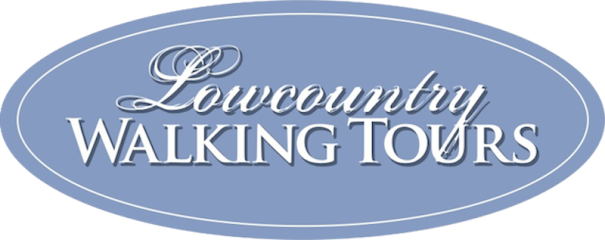Charleston Jazz History

Charleston jazz history is rich and complicated. While Charleston is not the most famous city to put jazz on the map, the styles of jazz that formed in Charleston are just as important as those invented in New Orleans and New York City. Celebrate Charleston jazz history at some of the city’s most famous music halls.
Origins of Jazz Music
Before we talk about the history of jazz in Charleston, we have to consider the history of jazz in the U.S. in general.
Jazz was born in New Orleans as a combination of Creole and African music styles. The Jim Crow laws (segregation) of the late 19th century prohibited white and non-white people of the South from congregating. The wedge between white and non-white people created a bond between the Creoles and African Americans that might otherwise have not existed.
There’s also a lot of variety in jazz music. Swing, Big Band and Blue Note are all styles of jazz music. You can also see the influences of other styles of music in jazz, such as black spirituals, gospel and rhythm and blues.
In Charleston, it was the Gullah and Geechee people who developed this style of music.
Over the years, jazz music has transformed and is now popular with a global audience. The jazz styles of the Carolina Coast differ from that of New Orleans, New York and Paris — but they all played an equally important role in the creation of different styles of jazz.
The Jenkins Orphanage
One of the greatest influences on jazz history in the Holy City was the Jenkins Orphanage. This orphanage, established in 1891, would go on to become one of the premier jazz schools for African American children in the country.
The school was established by Rev. Daniel Joseph Jenkins, a businessman and minister. Not long after its opening, local institutions began donating musical instruments to the orphanage and the Jenkins Orphanage Band was formed. Jenkins hired two music teachers, and the band would perform on the streets of Charleston, wearing donated old Citadel cadet uniforms.
They began touring the U.S. and Europe in the 1920s and even played at the inaugural ceremonies of presidents William Taft and Theodore Roosevelt.
Famous Charleston Jazz Musicians
Charleston was the hometown of many of the U.S. most famous jazz musicians. Thanks to the many jazz schools and institutions here, Charleston is still creating jazz legends.
Chris Smith
One of Charleston’s most famous jazz musicians was Chris Smith. Born in 1879, he eventually went on tour and ended up in New York City. There, he wrote songs for famous performers, including Fanny Brice and Jimmy Durante. Some of his hits include “Monkey Rag” and “Ballin’ the Jack.”
Charlton Singleton
Charlton Singleton started playing music when he was only three years old. He could play four instruments (piano, violin, and cello and trumpet) by the time he reached middle school. He tours all over the world with his ensembles and is a member of the Jazz Musicians of Charleston non-profit organization.
Bertha Hill
Another famous Charlestonian was Bertha Hill. She was a blues singer who danced in vaudeville houses in New York City — but she also sang on several Louis Armstrong songs.
Famous Charleston Jazz Songs
While New Orleans may lay claim to fame as the birthplace of many of the U.S.’s most recognized jazz musicians and songs, Charleston holds its own, too. In fact, not only were these songs written and popularized in the Holy City, but they also contain Charleston’s name in their titles.
The Charleston
If you’re not familiar with the song “The Charleston,” you’d probably still recognize the dance anywhere. Yes, the dance was created to go with the song.
The song was written by Cecil Mack and James P. Johnson in 1923. The latter invented stride piano playing (a style of playing the piano that was later popularized by Fats Waller where the left hand jumps significantly in range). Cecil Mack wrote the lyrics — though you’ve probably never heard them as they’re not usually included in most popular recordings of the song.
The dance was probably invented during a challenge competition (sort of a 20th-century version of a dance-off). These dances came from an African-American dance called Juba, which was introduced to South Carolina by enslaved African Americans from Kongo.
Charleston Rag
Another famous Charleston jazz song, Charleston Rag, was written in 1899 by Eubie Blake. The composer was only 12 years old when he penned this song — though technically he didn’t write the song down on paper until 1915 after he learned to write.
Where to See Live Jazz in Charleston
Luckily, there are still plenty of spots to see live jazz music in Charleston, and the city still celebrates its role in jazz history.
Charleston Jazz Festival
The Charleston Jazz Festival takes place over a long weekend at the end of January each year. Famous jazz musicians come from all over the country to perform. In addition to jazz music, the festival also celebrates other styles of music including blues, salsa and swing music.
Forte Jazz Lounge
The Forte Jazz Lounge is an upscale club that features live jazz music practically every night. If you want an excuse to get dressed up with your friends and sip a few craft cocktails or craft beers while tapping your toes to live jazz, this is the place to be. The lounge also hosts other types of events such as the Charleston Comedy Festival and features famous musicians like Sade.
Charleston Jazz Academy
The Charleston Jazz Academy is where the next generation of jazz musicians learn their craft. They offer full programs for music majors as well as music classes for kids of all ages. They also host the Charleston Jazz Festival each year! You can buy single tickets to see both students and guests stars perform. Or, a season pass will get you the VIP treatment all year long.
